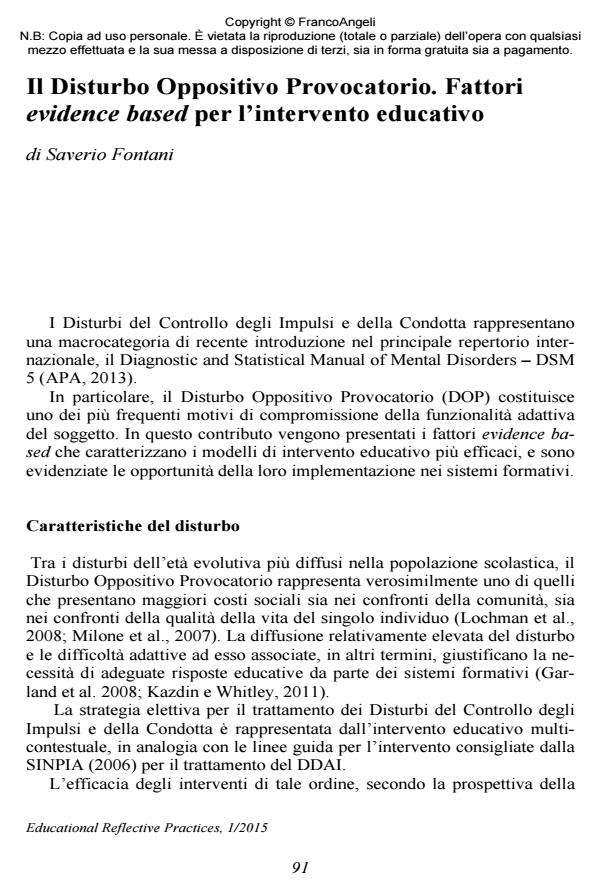Il Disturbo Oppositivo Provocatorio. Fattori evidence based per l’intervento educativo
Titolo Rivista EDUCATIONAL REFLECTIVE PRACTICES
Autori/Curatori Saverio Fontani
Anno di pubblicazione 2015 Fascicolo 2015/1
Lingua Italiano Numero pagine 14 P. 91-104 Dimensione file 86 KB
DOI 10.3280/ERP2015-001007
Il DOI è il codice a barre della proprietà intellettuale: per saperne di più
clicca qui
Qui sotto puoi vedere in anteprima la prima pagina di questo articolo.
Se questo articolo ti interessa, lo puoi acquistare (e scaricare in formato pdf) seguendo le facili indicazioni per acquistare il download credit. Acquista Download Credits per scaricare questo Articolo in formato PDF

FrancoAngeli è membro della Publishers International Linking Association, Inc (PILA)associazione indipendente e non profit per facilitare (attraverso i servizi tecnologici implementati da CrossRef.org) l’accesso degli studiosi ai contenuti digitali nelle pubblicazioni professionali e scientifiche
The Disorders of Impulse Control and Conduct represent a macro category recently introduced in the Diagnostic and Statistical Manual of Mental Disorders- DSM 5 (APA, 2013). In particular, the Oppositional Defiant Disorder (ODD) constitutes one of the most frequent reasons of impaired adaptive behavior of the subject. This article presents the factors that characterize the Evidence Based models of educational intervention more effective, and highlights the opportunities of their implementation in educational systems.
Saverio Fontani, Il Disturbo Oppositivo Provocatorio. Fattori evidence based per l’intervento educativo in "EDUCATIONAL REFLECTIVE PRACTICES" 1/2015, pp 91-104, DOI: 10.3280/ERP2015-001007